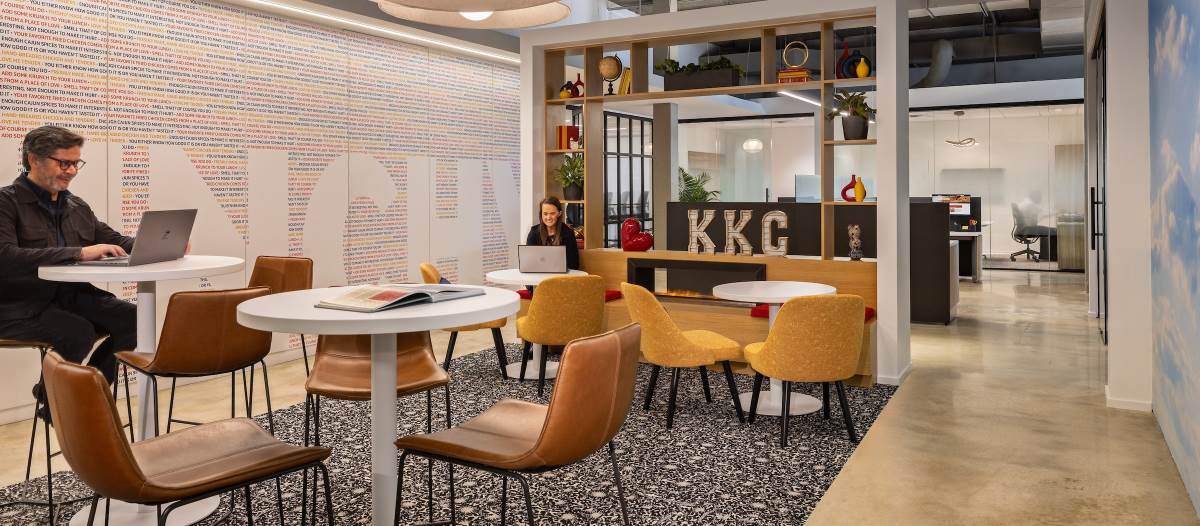The Gen Z Workforce
Blending digital transformation & mentorship

In 2024, nearly 25 percent of all new hires in skilled trade industries were 18 to 25 years old. As the cost of higher education rises, much of Generation Z (those born between 1997 and 2012) is choosing to enter the workforce following high school, bypassing a secondary education. For employers in the industrial sectors, this influx of young talent is arriving at a critical moment. As baby boomers reach retirement age, the silver tsunami of experienced workers exiting the workforce is leaving gaps that younger employees will be expected to fill.
Gen Z employees bring a fresh perspective to the workplace, including a wide range of learning styles and a strong preference for technology-driven environments. At the same time, the ongoing knowledge gap left by retiring baby boomers raises an important question: how can employers meet such diverse learning needs? As more Gen Z workers enter the workforce, and many choose careers in hands-on, deskless industries, their tech-savvy expectations will push employers to modernize training and onboarding. This will ultimately reshape how these industries attract, engage and retain talent.
Why Gen Z is choosing (and leaving) deskless jobs
In 2024, more than 90 percent of Gen Z and millennials in the U.S. considered leaving their jobs. Job hopping is now viewed as a viable option on the path to career advancement, better money and better benefits. Furthermore, many are against staying on a single career path, with new findings showing that 73 percent of Gen Z would like to switch jobs. For years, students were encouraged to view higher education as the sole path to job stability. When it comes to deskless industries, such as manufacturing and construction, there has been a tremendous stigma that these are fallback options for those who do not pursue college. These are legitimate, stable career paths in their own right, but many younger employees do not realize their job potential. In contrast to previous generations, Gen Z is looking for early signs of job longevity and stability.
Deskless industries can benefit from taking a deeper interest in, and executing on, what their newest generation of employees needs to thrive. A recent study found that 81 percent of U.S. workers say their company’s training makes them feel more inclined to stay at the company. However, Gen Z workers were 65 percent more likely than older generations to say they were not properly trained for the job. These patterns are prevalent globally with a recurring theme: Gen Z is unlike any generation before them, but they are prepared to grow and work where they are valued. It is up to employers to identify where they can best show up for today’s talent.
Training for the future: What Gen Z wants & needs
As technology reshapes how work gets done, Gen Z expects the tools they use on the job to match the tech they use in daily life. They respond best to resources that are easy to access and navigate. Employers who meet those expectations create a workforce that is both adaptable and prepared for what is ahead.
Skill gaps
In the AEC industry (architecture, engineering and construction), the biggest gap many employers are seeing in younger workers are soft skills. Essential capabilities such as communication, problem solving, working with clients and even technical acumen are not naturally showing up in new hires. Oftentimes, Gen Z excels with the technology-forward side of their job but lacks some of the hands-on experience and people skills they need to succeed and advance in the workforce.
To address this, employers should explore blended learning initiatives for their industry. This approach combines a number of learning methods, including online learning, mentorship activities, digital resources and on-the-ground experiences.
Learning preferences
As true digital natives, Gen Z is consuming information all day long on their phones, computers and tablets. To best help the newest generation of employees retain the training they need, employers should begin meeting them where they are. This can include implementing just-in-time (JIT) training tools, such as mobile-friendly training and microlearning.
JIT training provides learning content to employees at the exact moment when training is needed. This modern training method delivers relevant, timely resources in a way that boosts efficiency and improves knowledge retention.
One form of JIT training is mobile-friendly, or e-learning courses, offering flexible, remote access to online training. By allowing learners to complete coursework at their convenience, they can properly tune into the materials in front of them and digest the content at their own pace. In that same vein, microlearning methods offer bite-sized training content that allows employees to easily learn and apply information quickly.
Supporting modern employees requires modern methods, and these resources have moved far beyond the typical pen-and-paper training once common in the workplace. Now, resources can be shared as links or QR codes across various platforms such as email and text messaging. An additional benefit of digitally stored information is that it can be swiftly updated in real time – unlike out-of-date paper binders.
Onboarding that works
While the methods used to deliver training are essential, the timing is equally important. Within the first 45 days on the job, the turnover rate can be as high as 20 percent.
If onboarding is not effective, employees feel more stressed, less committed and less engaged. Employers must make sure their teams have well-thought-out plans, with clear goals and benchmarks for success. All onboarding programs should quickly immerse employees in their new company culture, engaging them and connecting their work to the overall purpose of the organization. Good onboarding is linked with short-term retention and long-term engagement.
Retention through learning & mentorship
Rapid digital transformation and the rise of AI is forcing companies to rethink how they engage and support their teams every day. Despite these changes, however, employees still need mentorship, including Gen Z. The format may evolve, but the value of human guidance has not changed. While delivery models may vary across organizations, the core needs of employees are universal, including feeling safe and prepared while on the job.
Mentorship and knowledge transfer
Well-thought-out mentorship programs can bring a wealth of knowledge sharing and community to an organization. By pairing seasoned workers with new hires, companies can preserve decade-spanning institutional learning and help build stronger connections among their staff members of varying ages. With Gen Z being concerned about the career longevity of a trade job, fostering connection with a seasoned employee can provide opportunities to discuss the benefits of skill development within the same organization.
Successful mentorship programs require careful planning and matching the right employees. Not only should timelines and goals be decided early on, but aspects like personality and skill assessments should also be considered. By putting in time to plan in advance, teams will continue to reap the benefits of mentorship for years to come.
Learning paths & upskilling
Ongoing training, especially when delivered through structured learning paths, is a proven way to support employee growth and improve retention. These customizable plans can guide employees from onboarding through upskilling, helping to strengthen knowledge and build confidence over time.
Importantly, they also offer something Gen Z explicitly wants: clear opportunities for advancement, as shown by 81 percent of Gen Z workers globally saying formal training programs are a key part of career growth. When employers put that kind of structure in place early, it sends a clear signal of investment in an employee's future. That kind of investment can go a long way in reducing turnover, especially among a generation that is not afraid to move on when they do not see a path forward.
Inclusivity in training
As one of the most diverse generations to enter the workforce, Gen Z brings a wide range of experiences and expectations with them. That means training programs cannot take a one-size-fits-all approach, and employers need to build materials that reflect these differences. Programs that intentionally support women, people of color and other underrepresented groups strengthen the talent pipeline. In deskless industries, inclusive apprenticeship and mentorship models have proven especially effective for attracting and retaining a broader range of employees. When inclusion is baked into training from day one, it helps every employee feel like they belong and that their future with the company is valued.
To best create programs that cater to different backgrounds, it is vital that materials are also reviewed and approved by a diverse group of professionals. Employers should ensure content is properly vetted and the review process is not siloed to one specific group as different training offerings will appeal to different employees. By offering varied resources, employers can tailor the learning materials to the individuals and their unique paths.
Conclusion
By the end of 2025, Gen Z is expected to comprise 27 percent of the global workforce. This generation is reshaping what it means to work in deskless industries, and to keep them engaged, employers must meet them where they are. Through modern training, mentorship and long-term growth opportunities, organizations can set up themselves, and their newest generation of workers, to thrive. While training approaches will vary globally, the industries that work proactively and quickly will win the loyalty of the world’s most technologically savvy generation.

Read more on Occupancy & Human Factors and Leadership & Strategy or related topics Workplace Utilization , Workforce Development and Communication Skills
Explore All FMJ Topics









